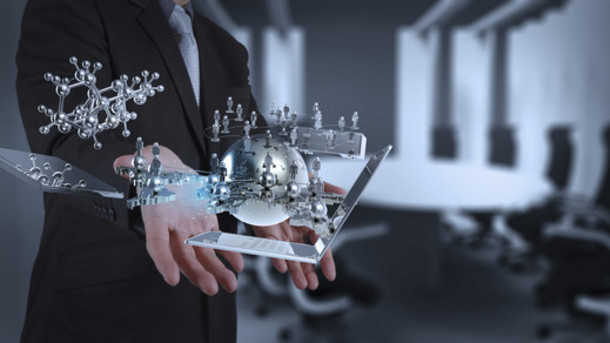Bioprinting Tissues and Organs: Reimagining Regenerative Medicine
The human body is an intricate machine, and the consequences can be devastating when parts malfunction or wear down. Traditionally, organ failure has meant limited treatment options, often relying on organ transplants or prosthetics. However, a revolutionary technology called bioprinting of tissues and organs is emerging, offering a glimpse into a future where damaged body parts can be replaced with functional, bioprinted alternatives.
Bioprinting utilizes the principles of 3D printing but with a crucial difference: the “ink” used is a bioink, a complex mixture containing living cells, biocompatible materials, and sometimes even growth factors. This bioink is then deposited layer-by-layer to create three-dimensional structures that mimic tissues and organs’ natural architecture and functionality.
The potential applications of bioprinting are vast. Imagine a world where:
- Patients with organ failure receive bioprinted kidneys, livers, or hearts, eliminating the waitlist for donor organs and the risk of rejection.
- Burn victims receive bioprinted skin grafts that seamlessly integrate with their own tissue, accelerating healing and minimizing scarring.
- Damaged bones are repaired with bioprinted scaffolds that promote bone regeneration, eliminating the need for invasive surgeries.
- Drug discovery has become more efficient and accurate thanks to the availability of bioprinted human tissue models that closely resemble real organs.
Challenges on the Path to Bioprinting Success
While the vision of bioprinted organs is captivating, significant challenges stand in the way. One major hurdle is replicating the complex vascularization of organs. A functioning organ requires a network of blood vessels to deliver oxygen and nutrients to its cells and remove waste products. Current bioprinting techniques struggle to create this intricate network within the printed tissues, limiting their functionality.
Another challenge is overcoming the body’s natural defence mechanisms. The immune system often recognizes bioprinted tissues as foreign, leading to rejection. Researchers are exploring various strategies to address this, including using a patient’s own cells for bioprinting, a technique known as autologous bioprinting.
Bioprinting Today: Stepping Stones to a Brighter Future
Despite the challenges, researchers are making significant strides in bioprinting. Here’s a glimpse into some of the exciting advancements:
- Prostheses and Implants: 3D printing technology, a close cousin of bioprinting, is already being used to create customized prosthetics and implants. These structures, like artificial limbs and dental implants, don’t require complex vascular networks and offer a significant improvement over traditional options.
- Simpler Tissues: Bioprinting has achieved success in creating simpler tissues with less intricate structures. For example, researchers have bioprinted skin grafts that offer a revolutionary approach to treating burn victims. Bioprinted scaffolds for regenerating breast tissue after mastectomy procedures are another testament to the potential of this technology.
- Building Blocks for Complex Organs: While printing fully functional organs remains a future goal, scientists are making progress with bioprinting simpler functional units called mini-tissues. These miniaturized tissues can mimic the structure and function of specific regions within an organ, paving the way for a deeper understanding of organ development and function.
Beyond Organ Replacement: The Broader Impact of Bioprinting
The applications of bioprinting extend far beyond replacing organs. Bioprinted tissues can be used for:
- Drug Discovery: Bioprinted tissues can be used to create more accurate and reliable models of human organs for drug testing. This could lead to the development of safer and more effective medications.
- Personalized Medicine: Bioprinting a patient’s own cells can create personalized tissue models that can be used to test the effectiveness of different drugs before administering them to the patient. This approach could revolutionize treatment by offering a more targeted and individualized approach to healthcare.
- Understanding Human Biology: Bioprinting provides researchers with a powerful tool to study how tissues develop and function. By creating bioprinted models of various tissues and organs, scientists can gain deeper insights into the complexities of human biology and disease progression.
A Realistic Vision for Bioprinting’s Future
The idea of printing a complete human heart or kidney might seem like something out of science fiction for now. However, the rapid advancements in bioprinting offer a compelling vision for the future of medicine. Bioprinting has the potential to revolutionize how we treat organ failure, manage chronic diseases, and even understand the fundamental workings of the human body.
As research continues to overcome the existing challenges, bioprinting can transform the landscape of healthcare, offering patients new hope for regeneration, extended lifespans, and a higher quality of life. The focus should be on this technology’s immense potential for improving human health and well-being, not on the hypothetical scenarios of replacing entire bodies. Bioprinting is poised to usher in a new era of regenerative medicine, and the journey towards that future is unlimited.

